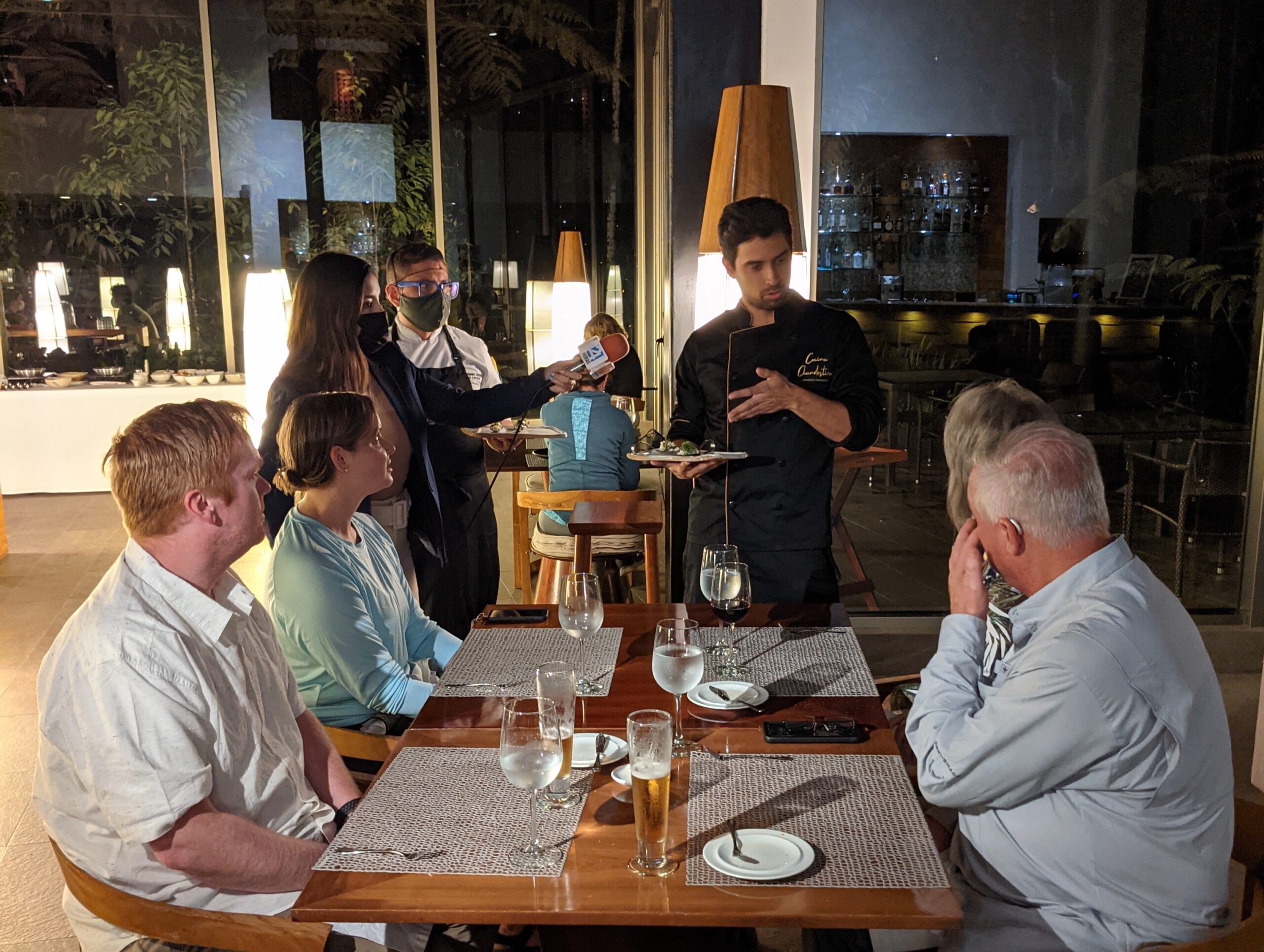Botanists at Mashpi Lodge in Ecuador Discover Edible Mushrooms –
And Serve Them To Guests
Sustainable gastronomy starts with locally produced ingredients, Mashpi Lodge’s Research & Biology Director stumbled upon two edible varieties and now works on strengthening surrounding communities’ economic opportunities
Great botanists are always in demand at Mashpi Lodge in Ecuador. The 24-room luxury hotel nestled within the Mashpi Rainforest Biodiversity Reserve in the Choco region near Quito has long understood that sustainable gastronomy starts with locally produced ingredients. The United Nations acknowledges the same, defining sustainable gastronomy as “a cultural expression related to the natural and cultural diversity of the world, linking sustainable development through agricultural development.” When the Lodge’s Research & Biology Director Mateo Roldan stumbled upon an opportunity to receive brilliant support to study fungi in the 2,500-hectare Reserve, he accepted it with open arms. Turns out he was onto something: The discovery of edible mushrooms the size of a thumbnail inspiring dreams of cultivation to gild the Lodge’s gastronomic experience and economically empower the surrounding communities.
We asked Mateo how he started a research project on fungi and ended up serving delicious native mushroom dishes to dazzle the palates of guests.
Mashpi Lodge’s Research & Biology Director Mateo Roldan
Why did you initiate a study of fungi? What were your hopes for a deep dive into edible mushrooms found on the Mashpi Reserve?
Honestly, we needed more knowledge on specific topics. A lot of topics. Sadly, Ecuador’s Choco region has been understudied and over-exploited. Countless species disappear and go extinct before we know they exist. Until 4 years ago, this was also the case for fungi. I was incredibly lucky to meet Dr. Paul Gamboa, one of the few fungi experts in Ecuador. Shortly after we connected via another researcher, he came to Mashpi and began studying our fungi diversity.
I’ve always been fascinated by mushrooms and was thrilled to find someone equally impassioned to research fungi on the Mashpi Reserve. The sole purpose was to learn how many and which species we could find at Mashpi. We didn’t expect to find anything edible.
Pleurotus sp. on the left; Auricularia fuscosusccinea on the right
What are the characteristics of an edible mushroom?
Edible mushrooms range widely, from the common champignon to subterranean truffles. An expert’s eye is fundamental. To determine the edible species from Mashpi, Dr. Gamboa compared his findings with other known edible species from all over Ecuador. Interestingly, this knowledge has been shared orally or by traditions in indigenous communities around the country. What he observed specifically for Mashpi’s mushrooms was the substrate, which is the surface or material over which the mushroom grows. The substrate will tell what type of nutrients or toxins the mushroom absorbs and thrives on.
For example, if you look at two of the edible mushrooms from Mashpi, they’re very different from each other.
Has Mashpi begun working on test recipes with these edible fungi? Have you eaten any of the discoveries?
Yes! Last year we set up a tasting and our lucky guests sampled the recipes. Mashpi’s chef teamed with the winner of 2020 Master Chef Ecuador to create and develop phenomenal recipes for the occasion using two mushroom species: Pleurotus sp. and Auricularia fuscosusccinea. The recipes included Mushroom Carpaccio and a Native Mushroom Risotto. They were so delicious – well worth the more than three hours we spent searching for them off the trails of Mashpi forest.
Will the Mashpi Biology team be involved in cultivation training for surrounding communities? How so?
Not yet, but hopefully soon. The Biology team doesn’t yet have the capacity and knowledge for this initiative. After the “discovery,” Dr. Gamboa began experimenting with the mushrooms in his laboratory in Quito. He has been testing different substrates, optimizing them to be the most cost-effective, creating conditions resembling those at Mashpi, including temperature and humidity. Such research is fundamental to start an experimentation phase of cultivation in the communities. We’ve been busy supporting Dr. Gamboa’s work by seeking funding, which has been greatly affected by the pandemic, and research partners to speed things up.

What is the expected timeline? When does your team envision having the project fully running and self-sustaining?
Sadly, it’s not clear at this moment. We need funding to continue cultivation research and to identify partners in the surrounding communities who are willing to dedicate their time and resources. We’re hopeful this will be an activity that they will embrace and see the excellent potential for their economic gain with almost zero impact on nature. Once we can get a greenhouse for cultivation running, very little maintenance will be needed. A few hours of work will suffice. Substrates usually are “waste” from other agricultural activities. We’re pretty optimistic that the initiative will raise significant interest in the communities, with Mashpi Lodge ready to purchase the product and have it on our menu. I can’t wait for that day!
